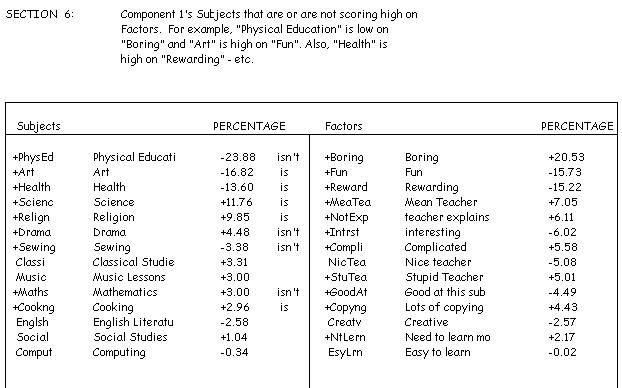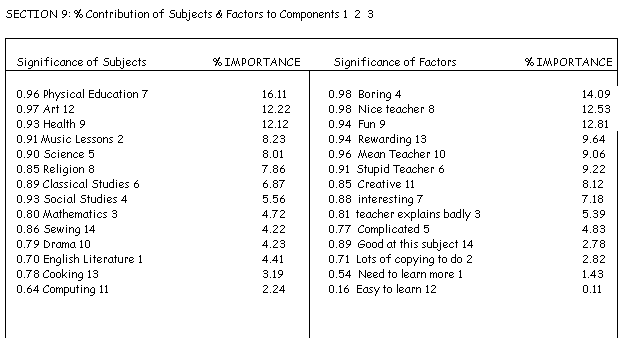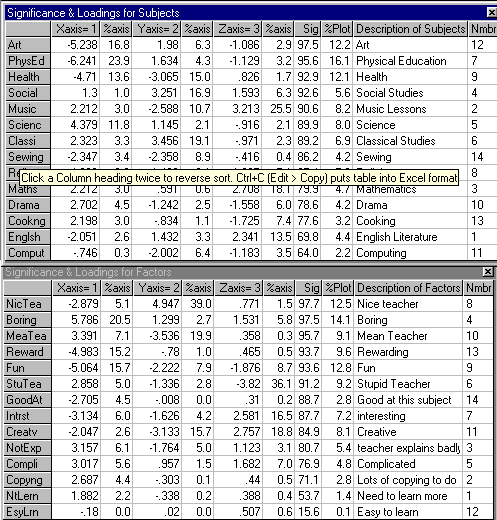
ToolTipText:-
Contributions contri.htm - Display selected
component loadings.

In these contribution tables where you have the same sign you read IS and where the signs differ you read IS NOT. e.g. PhysEd IS NOT Boring; Science IS NOT Fun; PhysEd IS Rewarding; PhysEd IS NOT Complicated; etc.

From Ingrid98.e the component contribution screens are now embellished to display significance and an on screen guide is offered to explain significant combinations.
Section 8 is likewise an image of contributions to Component 3.

If the grid has already been analyzed then you don't need to analyze
the grid again in order to display these sections. If the grid hasn't
been analyzed, then all the sections up to section 6 will be processed.
After viewing these sections you can click ![]() or
or ![]() to see the plot.
to see the plot.
The first column in the above report is the same as the "Sig" column below and is made up of the square root of the chosen squared vector for an item divided by the total sum of squares for that item across all the components. This is in contrast to the % IMPORTANCE column (%Plot below) which is the item's vector squared as a percentage of the contribution it makes to the total of all the currently selected vectors. A vector is the distance an item is from the origin.

If the Z-axis is zero![]() ,
only the selected components for the X & Y axis (in this case 1 &
2) are used, and the heading would look like this.
,
only the selected components for the X & Y axis (in this case 1 &
2) are used, and the heading would look like this.
![]()

Note that for the item "Physical Education" using components 1,2 & 3 a figure of .96 (95.6 in the Sig column) is obtained whereas when using only components 1 & 2 a figure of .94 (94.1 Sig) is obtained.
The other columns of numbers are the item's actual loadings on the selected components. Thus, in this example, you can assume that component 3 makes up 1.5% (i.e., 95.6-94.1) of the Significance of "Physed".
The "Nmbr" 7 in the last column of the table refers to element (subject)
7 and is printed as identification in case you have excluded non significant
features by setting a negative, i.e., ![]() significance.
significance.

In such a case, items falling outside the bandwidth (10% is used here) would have their descriptions blanked thus leaving only their number. Consequently if you choose say Component 1 for both the X-axis and the Y-axis you would probably get a number greater than 1 which would always be outside the maximum Significance allowed of 100%.
This section is put into a table so that you can copy & paste and
it is also available to be copied as a bitmap image. It also allows you
to print a sorted list that will appear in however big you make the selected
window size ![]() .
.